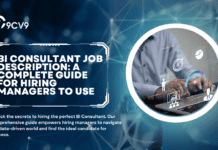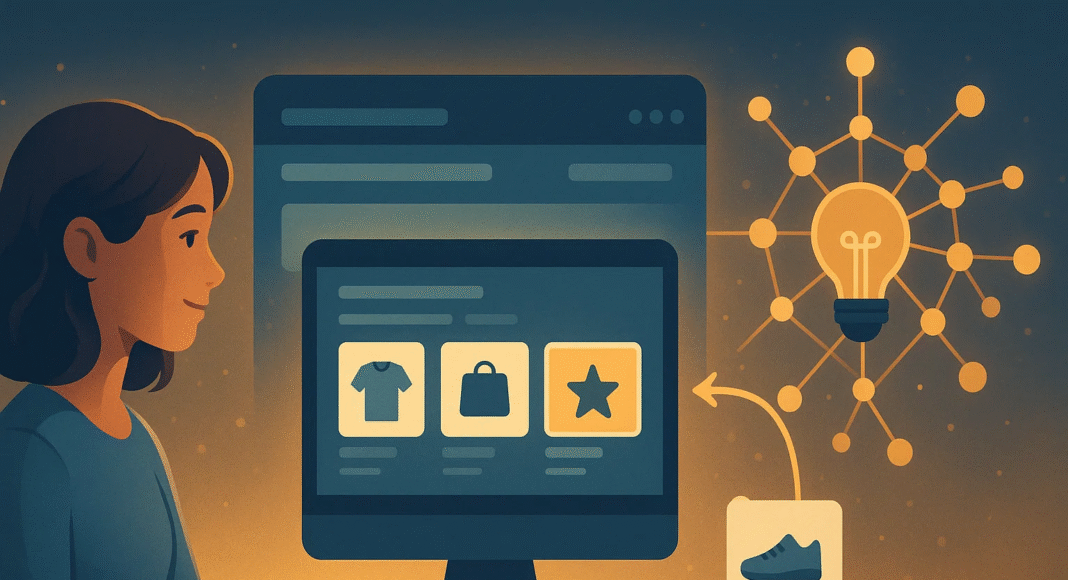Key Takeaways
- Recommendation engines use data-driven algorithms to provide personalized content, product, or service suggestions to users.
- Key types include collaborative filtering, content-based filtering, and hybrid models for improved accuracy and engagement.
- These systems power platforms like Amazon, Netflix, and Spotify, driving customer retention, satisfaction, and revenue growth.
In today’s digitally driven world, personalized user experiences are no longer a luxury—they are an expectation. Whether consumers are shopping online, browsing content, or watching videos on streaming platforms, they anticipate tailored suggestions that align with their preferences and behaviors. This surge in demand for hyper-personalized experiences has given rise to a powerful technological solution: recommendation engines. From eCommerce giants like Amazon and Alibaba to entertainment platforms like Netflix and Spotify, recommendation engines have become an integral part of modern digital ecosystems, silently powering the content and product suggestions users see every day.

At its core, a recommendation engine is a data-driven system designed to predict and suggest items that a user is most likely to engage with based on their past interactions, behaviors, preferences, and contextual data. These intelligent systems leverage advanced algorithms, machine learning, and big data analytics to analyze enormous volumes of user information and deliver tailored recommendations in real time. This not only improves the overall user experience but also significantly boosts business outcomes by increasing user engagement, retention, and conversion rates.
The growing importance of recommendation engines is reflected across diverse industries. In the retail sector, they help customers discover products they didn’t know they needed. In media and entertainment, they surface shows and movies aligned with viewers’ tastes. In social media, they curate feeds and suggest new connections. Even in education and healthcare, recommendation engines are increasingly used to personalize learning paths and suggest health interventions, respectively. As digital footprints grow and user expectations evolve, the scope and influence of recommendation engines are expanding at a remarkable pace.
Understanding how these systems operate requires a deep dive into the different types of recommendation engines, their underlying algorithms, the technological frameworks that support them, and the way they process user data to deliver precise suggestions. From collaborative filtering to content-based approaches and hybrid models, each technique comes with its own strengths and challenges. Moreover, as privacy concerns and ethical implications of data usage become more prominent, the development of transparent and responsible recommendation systems is becoming a top priority for organizations worldwide.
This comprehensive guide will explore what recommendation engines are, how they function, what technologies they rely on, and how they are transforming user experiences across digital platforms. Whether you’re a tech enthusiast, a digital marketer, a software developer, or a business leader looking to integrate recommendation systems into your strategy, this blog will provide valuable insights into the mechanics, benefits, challenges, and future of recommendation engine technology.
By the end of this guide, readers will not only gain a clear understanding of how recommendation engines work but also appreciate the strategic value they bring in today’s competitive digital landscape. Let’s begin by exploring the fundamental question: what exactly is a recommendation engine?
Before we venture further into this article, we would like to share who we are and what we do.
About 9cv9
9cv9 is a business tech startup based in Singapore and Asia, with a strong presence all over the world.
With over nine years of startup and business experience, and being highly involved in connecting with thousands of companies and startups, the 9cv9 team has listed some important learning points in this overview of What are Recommendation Engines & How Do They Work.
If your company needs recruitment and headhunting services to hire top-quality employees, you can use 9cv9 headhunting and recruitment services to hire top talents and candidates. Find out more here, or send over an email to [email protected].
Or just post 1 free job posting here at 9cv9 Hiring Portal in under 10 minutes.
What are Recommendation Engines & How Do They Work
- What is a Recommendation Engine?
- Key Components of a Recommendation Engine
- Types of Recommendation Engines
- How Recommendation Engines Work (Step-by-Step)
- Technologies Behind Recommendation Engines
- Benefits of Using Recommendation Engines
- Real-World Use Cases of Recommendation Engines
- Challenges and Limitations
- Future Trends in Recommendation Engines
1. What is a Recommendation Engine?
A recommendation engine—also known as a recommender system—is a data-driven software tool that analyzes user data and behavior to suggest relevant products, services, or content. These systems are designed to enhance user experience, increase engagement, and improve business performance by delivering personalized recommendationsbased on patterns identified in user interactions.
Definition and Core Function
What Does a Recommendation Engine Do?
- Uses algorithms and user data to predict what a user might like or need.
- Automatically suggests items such as:
- Products (e.g., Amazon)
- Movies and shows (e.g., Netflix)
- Songs and playlists (e.g., Spotify)
- Articles and news stories (e.g., Google News)
- Friends or connections (e.g., Facebook, LinkedIn)
Primary Goal of Recommendation Engines
- To reduce decision fatigue by helping users find relevant content faster.
- To increase user engagement and improve satisfaction through personalization.
- To boost business metrics such as click-through rates, conversion rates, and sales revenue.
Why Recommendation Engines Matter in Today’s Digital Landscape
Enhanced User Experience
- Delivers content that aligns with individual interests.
- Improves navigation through personalized suggestions.
- Provides a seamless and intuitive digital experience.
Business Benefits
- Drives increased sales through upselling and cross-selling.
- Enhances customer retention by offering relevant content.
- Generates valuable insights about customer behavior and preferences.
Where Recommendation Engines Are Commonly Used
eCommerce Platforms
- Amazon recommends products based on user behavior, browsing history, and previous purchases.
- eBay suggests similar products using machine learning algorithms and customer search trends.
Streaming Services
- Netflix analyzes watch history, genre preferences, and viewing patterns to suggest TV shows and movies.
- Spotify offers personalized playlists like “Discover Weekly” based on listening habits and song similarity.
Social Media Platforms
- Facebook recommends friends, pages, and groups based on user interests and mutual connections.
- YouTube suggests videos based on watch history, likes, and trending content.
Online Education Platforms
- Coursera and Udemy recommend courses based on past enrollments, user skill levels, and trending topics.
News and Content Platforms
- Google News curates articles based on user preferences and reading habits.
- Medium provides story suggestions by analyzing interests and reading time.
Key Characteristics of Recommendation Engines
Data-Driven Personalization
- Relies on structured and unstructured data collected from various user touchpoints.
- Continuously evolves based on user feedback and behavior.
Real-Time Processing Capabilities
- Suggests content or products instantly as users browse or interact.
- Adapts to user changes dynamically with little to no latency.
Algorithmic Intelligence
- Incorporates machine learning, artificial intelligence, and statistical modeling.
- Supports evolving user patterns with self-learning capabilities.
Types of Data Used by Recommendation Engines
User-Based Data
- Clicks, likes, and shares.
- Purchase and browsing history.
- Ratings and reviews.
- Time spent on specific content or products.
Item-Based Data
- Product attributes (e.g., category, brand, price).
- Content metadata (e.g., title, description, tags).
- Contextual relevance (e.g., time, location, device used).
Demographic and Behavioral Data
- Age, gender, location.
- Device usage and access patterns.
- Interaction frequency and session duration.
Examples of Recommendation Engines in Action
Amazon: “Customers Who Bought This Also Bought”
- Uses item-based collaborative filtering to identify related products.
- Enhances the shopping cart experience and encourages add-on purchases.
Netflix: Personalized Watch Suggestions
- Combines collaborative and content-based filtering in a hybrid model.
- Learns from user preferences and viewing times to suggest shows with similar themes, genres, or actors.
Spotify: “Discover Weekly” Playlist
- Analyzes the user’s listening habits and compares them with others who enjoy similar music.
- Uses deep learning models and audio feature analysis to deliver relevant song recommendations.
LinkedIn: People You May Know
- Recommends professional connections based on shared networks, mutual interests, and workplace history.
Conclusion of This Section
Recommendation engines have become an essential component of the modern digital experience, offering personalized content delivery that caters to user interests and drives measurable business outcomes. By understanding what a recommendation engine is and how it works at a high level, businesses and tech professionals can better appreciate its role in transforming industries and improving user satisfaction.
2. Key Components of a Recommendation Engine
A robust recommendation engine is composed of several interconnected components that work together to collect data, analyze patterns, generate suggestions, and deliver personalized experiences to users. These core components are critical to ensuring accuracy, scalability, and relevance in recommendations. Each element plays a unique role in transforming raw data into intelligent predictions.
1. Data Collection Layer
Purpose
- Gathers user and item-related data from multiple sources.
- Acts as the foundational layer for further processing and analysis.
Types of Data Collected
- User Data:
- Browsing history
- Purchase behavior
- Ratings and reviews
- Search queries
- Demographics (age, gender, location)
- Item Data:
- Product attributes (price, brand, category)
- Content metadata (genre, title, tags)
- Multimedia content (images, video, audio features)
- Contextual Data:
- Device type, time of day, location
- Session length and user interaction patterns
Examples
- Amazon collects past purchases, wish list items, and page visits to tailor product suggestions.
- Netflix captures what users watch, when they watch, and how long they watch to refine content recommendations.
2. Data Storage and Management
Purpose
- Stores vast volumes of structured and unstructured data.
- Enables fast access, retrieval, and real-time updates.
Common Technologies
- Relational Databases (e.g., MySQL, PostgreSQL) for structured user data.
- NoSQL Databases (e.g., MongoDB, Cassandra) for flexible, scalable data storage.
- Data Lakes (e.g., Amazon S3, Hadoop HDFS) for storing raw, unstructured data at scale.
- Cloud Storage Services (e.g., Google Cloud Storage, Azure Blob Storage) for real-time data pipelines.
Examples
- Spotify uses distributed databases to manage massive volumes of song metadata and user listening habits.
- YouTube stores data related to video metadata, watch history, and likes in high-throughput databases.
3. Data Processing & Preprocessing Module
Purpose
- Cleans, transforms, and normalizes raw data to make it suitable for analysis.
- Removes noise and handles missing or inconsistent data points.
Typical Processing Tasks
- Data cleaning (removing duplicates or invalid entries)
- Feature extraction (identifying keywords, tags, categories)
- Normalization (scaling numerical data)
- Dimensionality reduction (simplifying complex datasets)
- Session tracking and segmentation
Examples
- LinkedIn processes user engagement data to extract features like job titles, industries, and skill matches for connection recommendations.
- Amazon Prime Video uses metadata and viewing behaviors to tag content with attributes like language, mood, or genre.
4. Recommendation Algorithms Engine
Purpose
- Core analytical engine that generates personalized suggestions.
- Uses mathematical models, statistical techniques, and AI/ML algorithms.
Primary Algorithm Types
- Collaborative Filtering:
- User-based or item-based filtering
- Assumes users who liked similar items in the past will like similar items in the future
- Example: Netflix recommending movies based on similar users’ ratings.
- Content-Based Filtering:
- Suggests items similar to those a user liked before, based on item features
- Example: Spotify suggesting songs with similar tempo, genre, or instruments.
- Hybrid Filtering:
- Combines collaborative and content-based methods for higher accuracy
- Example: YouTube blending your past watch history with trending videos and similar user interests.
- Deep Learning and Neural Networks:
- Uses advanced models to learn complex patterns in user behavior
- Example: Amazon’s product recommendation engine leveraging deep neural networks for item embeddings and user profiling.
5. Model Training and Evaluation Component
Purpose
- Builds, tunes, and validates models using historical data.
- Ensures models accurately predict user preferences.
Training Techniques
- Supervised and unsupervised machine learning
- Reinforcement learning for real-time adaptability
- Cross-validation for model generalization
- A/B testing for real-world performance benchmarking
Evaluation Metrics
- Precision, recall, and F1-score
- Mean Absolute Error (MAE), Root Mean Squared Error (RMSE)
- Click-through rate (CTR)
- User engagement and dwell time
Examples
- YouTube regularly performs A/B testing to compare recommendation models and optimize video suggestions.
- Amazon tunes its algorithms using feedback from millions of product views and purchases.
6. Filtering and Ranking System
Purpose
- Sorts and prioritizes items based on relevance and likelihood of user interaction.
- Filters out irrelevant, outdated, or previously seen items.
Ranking Criteria
- Predicted relevance score
- Popularity and freshness of content
- Personalization strength
- User behavior signals (e.g., recency, frequency)
Examples
- Google News ranks articles based on user interest, news recency, and regional preferences.
- Facebook Feed ranks posts using engagement history, content type, and user interactions.
7. Real-Time Recommendation Engine
Purpose
- Delivers dynamic, personalized suggestions instantly as users interact with the platform.
- Supports scalable, low-latency predictions for millions of users concurrently.
Technologies Used
- Real-time data stream processing (e.g., Apache Kafka, Apache Flink)
- In-memory databases and caching (e.g., Redis, Memcached)
- Microservice architectures for flexible deployment
Examples
- Spotify updates music suggestions in real time based on skips, replays, and current mood-based listening.
- Amazon updates cross-sell and upsell recommendations as customers add items to their cart or browse categories.
8. Feedback Loop and Continuous Learning
Purpose
- Uses user interactions to improve the system over time.
- Enables the engine to learn and adapt to changing user preferences.
Feedback Mechanisms
- Explicit feedback: Ratings, likes/dislikes, thumbs up/down
- Implicit feedback: Time spent, scrolling behavior, purchase completion
Benefits of Feedback Loops
- Refines accuracy of future recommendations
- Identifies seasonal or contextual shifts in behavior
- Personalizes at the individual level over time
Examples
- Netflix adapts its suggestions based on what users stop watching halfway through versus what they binge-watch.
- TikTok tailors content delivery based on rapid feedback from user interactions like likes, shares, and comments.
Conclusion of This Section
The success of any recommendation engine hinges on the seamless integration of its key components—from data collection to real-time delivery and adaptive learning. Each layer plays a critical role in shaping accurate, timely, and personalized suggestions. Whether implemented in retail, entertainment, or social media, understanding these components is essential for building or evaluating an effective recommender system.
3. Types of Recommendation Engines
Recommendation engines are not one-size-fits-all solutions. Different types of recommendation systems are designed based on specific algorithms and use cases. The choice of a recommendation engine depends on the nature of the data available, business objectives, user behavior, and system constraints. Below are the primary types of recommendation engines used across various industries.
1. Collaborative Filtering Recommendation Engines
Overview
- Based on the idea that users with similar preferences in the past will likely prefer similar items in the future.
- Does not require detailed item information—relies solely on user behavior.
Types of Collaborative Filtering
- User-Based Collaborative Filtering
- Finds users with similar rating patterns and recommends what similar users liked.
- Example: If User A and User B both rated items X and Y highly, and User A also liked item Z, then item Z is recommended to User B.
- Item-Based Collaborative Filtering
- Focuses on finding similarities between items rather than users.
- Example: If many users who bought item A also bought item B, item B is recommended to users considering item A.
Advantages
- Simple to implement.
- Learns directly from user interactions without needing domain knowledge.
Challenges
- Suffers from the “cold start” problem when new users or items are introduced.
- Struggles with sparse datasets.
Examples
- Amazon uses item-based collaborative filtering to suggest products commonly bought together.
- Netflix applies user-based filtering to recommend shows that similar viewers have rated positively.
2. Content-Based Recommendation Engines
Overview
- Recommends items similar to those the user has liked in the past.
- Uses item metadata and user profiles to generate suggestions.
Key Components
- User Profile
- Captures a user’s preferences and interests based on prior interactions.
- Item Profile
- Describes an item’s attributes such as category, tags, keywords, or features.
How It Works
- The system compares a user’s profile to item profiles to find the best matches.
- Recommends items with similar attributes to previously liked ones.
Advantages
- Provides highly personalized recommendations.
- Solves the cold-start problem for new users better than collaborative filtering.
Challenges
- Requires detailed item metadata.
- May lead to over-specialization (recommending similar items repeatedly).
Examples
- Spotify recommends songs with similar genres, tempo, or lyrics to those a user has listened to.
- LinkedIn suggests job listings based on skills, job titles, and industries from a user’s profile.
3. Hybrid Recommendation Engines
Overview
- Combines two or more recommendation approaches (e.g., collaborative filtering + content-based) to increase accuracy and address the limitations of individual methods.
Common Hybrid Approaches
- Weighted Hybrid
- Assigns weights to different recommendation models and combines their outputs.
- Switching Hybrid
- Switches between different recommendation algorithms based on context or availability of data.
- Feature Augmentation
- Uses the output of one system as an input feature for another system.
Advantages
- Combines the strengths of multiple models.
- Reduces common issues like cold-start, sparsity, and overspecialization.
Challenges
- Increased complexity in development and maintenance.
- Requires more computational resources.
Examples
- Netflix blends collaborative and content-based filtering to personalize recommendations by analyzing viewing patterns and show attributes.
- YouTube uses a hybrid model that combines watch history, user demographics, and video metadata to recommend videos.
4. Knowledge-Based Recommendation Engines
Overview
- Recommends items based on explicit knowledge of how specific item features meet specific user needs.
How It Works
- Uses rules or logic to suggest items based on user preferences and requirements.
- Does not rely on historical user behavior or interactions.
Best Use Cases
- When purchase decisions are infrequent or highly dependent on specific user constraints.
- Ideal for high-involvement products like cars, houses, or travel packages.
Advantages
- No need for large volumes of historical data.
- Works well for niche domains and new items.
Challenges
- Requires domain-specific knowledge.
- Needs well-defined rules and user inputs.
Examples
- Travel websites recommend vacation packages based on user preferences like budget, climate, or travel dates.
- Real estate platforms suggest properties based on user inputs like location, price range, and number of bedrooms.
5. Demographic-Based Recommendation Engines
Overview
- Offers suggestions based on demographic profiles such as age, gender, income, education, or location.
How It Works
- Groups users with similar demographic characteristics.
- Recommends items preferred by users in the same demographic segment.
Advantages
- Simple and quick to implement.
- Useful when behavior data is unavailable or insufficient.
Challenges
- Lacks personalization beyond group-level profiling.
- Can be inaccurate due to overgeneralization.
Examples
- E-commerce platforms may recommend trendy items to teenagers versus practical goods for older adults.
- Streaming services might promote animated films to users in family demographics.
6. Context-Aware Recommendation Engines
Overview
- Takes into account contextual information such as time, location, mood, or device when making recommendations.
How It Works
- Adapts recommendations dynamically based on the user’s current situation.
- Enhances personalization through real-time data analysis.
Common Contextual Factors
- Device type (mobile, desktop, tablet)
- Time of day or day of the week
- Location (home, office, in transit)
- Weather conditions or seasonal trends
Advantages
- Delivers highly relevant suggestions based on immediate context.
- Improves user engagement and satisfaction.
Challenges
- Requires real-time data processing capabilities.
- May raise privacy and data sensitivity concerns.
Examples
- Food delivery apps recommending breakfast items in the morning and dinner options in the evening.
- Retail apps promoting raincoats or umbrellas based on local weather conditions.
Conclusion of This Section
Understanding the various types of recommendation engines is essential for selecting the right model to meet specific user needs and business goals. Whether leveraging collaborative, content-based, hybrid, or context-aware approaches, each type offers unique strengths tailored to different applications. Organizations can significantly enhance user experience, engagement, and conversion rates by choosing or combining these recommendation techniques strategically.
4. How Recommendation Engines Work (Step-by-Step)
A recommendation engine functions as an intelligent system that filters and predicts user preferences through data analysis and machine learning. To deliver personalized and relevant content, the engine follows a structured and methodical process from data collection to real-time delivery. Understanding this process helps businesses and developers deploy smarter recommendation systems that drive engagement and revenue.
Step 1: Data Collection
Purpose
- Gather user-related and item-related data that can be used to generate personalized recommendations.
Types of Data Collected
- User Data
- Browsing history
- Click-through behavior
- Purchase history
- Ratings and reviews
- Time spent on specific items
- Item Data
- Product or content attributes (e.g., genre, price, description)
- Tags, categories, metadata
- Inventory availability
- Contextual Data
- Location, device type, time of day
- Seasonal or event-based behavior patterns
Sources of Data
- Web and mobile analytics platforms
- CRM systems and customer profiles
- APIs from third-party integrations
- Cookies and session trackers
Examples
- Amazon collects browsing and purchase data to recommend products.
- Netflix gathers watch history and user ratings to suggest shows or movies.
Step 2: Data Preprocessing and Cleaning
Purpose
- Ensure the raw data is structured, clean, and usable for analysis and modeling.
Common Preprocessing Tasks
- Removing Noise
- Eliminating irrelevant logs, incomplete entries, or outliers
- Handling Missing Values
- Filling gaps through imputation or removal of null entries
- Normalization
- Standardizing data formats for consistency (e.g., timestamps, numerical scales)
- Tokenization
- Splitting text into keywords or tags for content-based filtering
Importance
- Improves the quality and accuracy of the recommendation results
- Reduces computational errors during modeling
Example
- An e-commerce platform filters out abandoned cart sessions or accidental clicks before using the data for analysis.
Step 3: Feature Extraction and Representation
Purpose
- Transform raw data into meaningful features that can be interpreted by machine learning algorithms.
Types of Features
- User Features
- Age, gender, preferences, device type, location
- Item Features
- Product specifications, brand, category, rating
- Behavioral Features
- Frequency of visits, dwell time, past purchases
Techniques Used
- One-hot encoding for categorical variables
- Embedding techniques for textual or sequential data
- Dimensionality reduction (e.g., PCA) to simplify datasets
Example
- A music streaming app may extract genre preferences and listening patterns to tailor a user’s playlist.
Step 4: Model Building or Algorithm Selection
Purpose
- Choose the appropriate algorithm that will predict the most relevant recommendations.
Common Algorithms Used
- Collaborative Filtering
- User-based or item-based nearest neighbor
- Content-Based Filtering
- TF-IDF (Term Frequency–Inverse Document Frequency)
- Cosine similarity or Euclidean distance
- Matrix Factorization
- Singular Value Decomposition (SVD), Alternating Least Squares (ALS)
- Deep Learning Approaches
- Neural collaborative filtering, recurrent neural networks (RNNs)
- Hybrid Models
- Combining two or more models for improved accuracy
Factors in Algorithm Selection
- Size and sparsity of dataset
- Type of available data (explicit ratings vs. implicit feedback)
- Business goals (accuracy, diversity, scalability)
Example
- YouTube uses deep learning-based collaborative filtering along with content metadata to recommend personalized videos.
Step 5: Training the Model
Purpose
- Feed the extracted features into the selected algorithm to learn patterns and predict preferences.
Training Methods
- Supervised learning using labeled data such as ratings
- Unsupervised learning for pattern discovery (e.g., clustering users or items)
- Reinforcement learning for dynamic personalization based on feedback
Key Activities
- Dividing data into training, validation, and testing sets
- Adjusting hyperparameters for model tuning
- Evaluating performance metrics (e.g., precision, recall, RMSE)
Example
- A fashion retailer might train its model using user purchase data and product attributes to recommend trending apparel.
Step 6: Generating Recommendations
Purpose
- Use the trained model to provide ranked or scored recommendations for individual users.
Recommendation Output Types
- Personalized Rankings
- List of items ordered by predicted user interest
- Top-N Suggestions
- Limited number of items most likely to engage the user
- Context-Aware Outputs
- Recommendations tailored to time, device, or location
Ranking Techniques
- Scoring algorithms (e.g., cosine similarity, probability scores)
- Business rule layering (e.g., boosting high-margin products)
Example
- Spotify presents “Discover Weekly” playlists ranked by predicted listening likelihood and musical similarity.
Step 7: Evaluation and Metrics
Purpose
- Measure the performance and quality of the recommendation engine before and after deployment.
Key Evaluation Metrics
- Precision
- How many recommended items were relevant?
- Recall
- How many relevant items were actually recommended?
- F1-Score
- Balance between precision and recall
- Click-Through Rate (CTR)
- Percentage of recommendations clicked by users
- Conversion Rate
- Percentage of recommendations that led to purchases or actions
A/B Testing
- Comparing two or more recommendation strategies on a sample audience
- Helps in determining the optimal algorithm or layout
Example
- Netflix continuously tests different recommendation strategies and layouts to identify what drives more engagement.
Step 8: Real-Time Recommendation and Personalization
Purpose
- Serve recommendations to users instantly as they browse or interact with the platform.
Techniques for Real-Time Delivery
- Precomputing results and caching them
- Using streaming data pipelines for live updates
- Deploying lightweight models via APIs or microservices
Use Cases
- Dynamic pricing in e-commerce
- Real-time movie or content suggestions
- Instant cross-selling or upselling opportunities
Example
- Amazon updates product suggestions in real-time as users view different items during a shopping session.
Step 9: Feedback Loop and Continuous Learning
Purpose
- Capture new user behavior and interactions to refine future recommendations.
Types of Feedback
- Explicit Feedback
- Ratings, likes, or thumbs up/down
- Implicit Feedback
- Clicks, watch time, scroll depth, dwell time
Benefits
- Keeps the recommendation system adaptive and up to date
- Improves personalization over time
Example
- TikTok fine-tunes its “For You” feed continuously based on how long a user watches, skips, or replays videos.
Conclusion of This Section
The process behind recommendation engines is both data-driven and user-centric. From collecting raw behavior data to training sophisticated models and serving real-time suggestions, each step plays a crucial role in delivering relevant and personalized recommendations. Companies like Amazon, Netflix, and Spotify have mastered this process to enhance user experience, increase engagement, and drive conversions—setting benchmarks for industries worldwide.
5. Technologies Behind Recommendation Engines
Recommendation engines are built upon a robust ecosystem of technologies that work together to deliver accurate and personalized suggestions. These technologies span across data management, machine learning, artificial intelligence, real-time processing, and API deployment. Each layer of the technology stack plays a critical role in ensuring that recommendation systems are fast, scalable, and intelligent.
Data Storage and Management Technologies
Purpose
- To store, organize, and retrieve vast amounts of user and item-related data efficiently.
Key Technologies
- Relational Databases (SQL)
- PostgreSQL, MySQL for structured data like user profiles, product catalogs.
- NoSQL Databases
- MongoDB, Cassandra, DynamoDB for flexible and scalable storage of semi-structured or unstructured data.
- Data Warehousing Solutions
- Amazon Redshift, Google BigQuery, Snowflake for handling large-scale analytics and historical data storage.
- Distributed File Systems
- Hadoop Distributed File System (HDFS) for big data processing and fault tolerance.
Examples
- Netflix uses Amazon S3 and Cassandra to store user activity logs and recommendation metadata.
- Spotify leverages Google Cloud Bigtable and BigQuery for music metadata and listening history.
Machine Learning and Artificial Intelligence Frameworks
Purpose
- To train models, detect patterns, and generate predictions for personalized recommendations.
Popular Frameworks
- Scikit-learn
- Useful for building baseline models like collaborative filtering and clustering.
- TensorFlow and PyTorch
- Ideal for deep learning models like neural collaborative filtering, attention-based systems.
- Apache Spark MLlib
- Enables scalable machine learning for large datasets across distributed systems.
- LightFM
- Specialized for hybrid recommendation models combining collaborative and content-based filtering.
- Surprise
- A Python library for building and analyzing recommender systems based on explicit rating data.
Applications
- LinkedIn uses deep learning models developed with TensorFlow for skill and job recommendations.
- Amazon employs a combination of gradient-boosted models and neural nets for personalized product ranking.
Data Processing and ETL Pipelines
Purpose
- To ingest, clean, transform, and prepare raw data into usable formats for recommendation engines.
ETL Technologies
- Apache NiFi, Talend, Airflow
- For orchestrating and automating data workflows.
- Apache Kafka
- For handling real-time streaming data and event tracking.
- Spark Streaming and Flink
- For real-time data transformation and model updates.
- Batch Processing Tools
- Hadoop MapReduce for large-scale historical data processing.
Examples
- YouTube processes billions of user interaction events using Flume and Kafka pipelines before feeding data into their recommendation model.
- Pinterest uses Airflow to manage DAGs (Directed Acyclic Graphs) for daily model training and evaluation.
Content Management and Feature Engineering Tools
Purpose
- To extract and prepare features from content and user interaction data for use in ML models.
Technologies and Techniques
- TF-IDF and Word2Vec
- For turning product descriptions and user reviews into vector representations.
- Natural Language Processing (NLP)
- SpaCy, NLTK, or BERT for semantic analysis of textual content like titles, summaries, and tags.
- Computer Vision Models
- CNNs or transfer learning models like ResNet and VGG for analyzing images in fashion or media recommendations.
- Audio Processing
- MFCC, spectrogram analysis for music/audio recommendations.
Examples
- Spotify applies audio feature extraction to recommend songs with similar tempo or rhythm.
- Netflix uses NLP and deep learning on video metadata and subtitles to understand content themes and genres.
Recommendation Algorithms and Engines
Purpose
- To execute algorithms that generate suggestions based on learned patterns and user profiles.
Key Technologies
- Matrix Factorization
- Singular Value Decomposition (SVD), ALS for latent feature modeling.
- K-Nearest Neighbors (KNN)
- Used for user-user or item-item similarity recommendations.
- Reinforcement Learning
- Applied in dynamic systems like e-commerce to optimize engagement through trial-and-error learning.
- Hybrid Systems
- Combine multiple algorithms to reduce cold start issues and improve relevance.
Tools and Libraries
- Apache Mahout
- A scalable machine learning library focused on collaborative filtering.
- Microsoft Recommenders
- A toolkit by Microsoft for implementing various recommender algorithms and evaluation metrics.
Example
- Amazon combines content-based filtering with matrix factorization and boosting algorithms to serve real-time suggestions.
Real-Time Data and Personalization Engines
Purpose
- To enable instant, context-aware recommendations during user interaction.
Technologies Involved
- Redis and Memcached
- For caching pre-computed recommendation lists and speeding up response time.
- Apache Kafka
- Handles streaming data for real-time updates and user feedback ingestion.
- Edge Computing and CDN Integration
- Ensures faster delivery of recommendations across devices and regions.
Use Cases
- Personalized banners and landing pages
- In-session behavior tracking and suggestion updates
- Contextual recommendations based on device or geolocation
Example
- TikTok uses real-time behavior signals such as likes, skips, and rewatches to fine-tune its feed dynamically using edge AI processing.
APIs and Deployment Frameworks
Purpose
- To integrate the recommendation engine with web/mobile platforms and ensure smooth deployment.
Technologies Used
- RESTful APIs and GraphQL
- To fetch, update, and serve personalized recommendations across multiple touchpoints.
- Microservices Architecture
- Helps in deploying modular and scalable recommendation features.
- Docker and Kubernetes
- For containerizing models and managing their deployment lifecycle.
- CI/CD Pipelines
- Jenkins, GitHub Actions, or CircleCI for automated deployment and model updates.
Examples
- Netflix uses microservices and REST APIs to deploy modular recommendation components.
- Etsy uses GraphQL to customize product recommendations in real-time based on UI context.
Cloud and Big Data Ecosystems
Purpose
- To support scalable computing, storage, and analytics for enterprise-grade recommendation systems.
Major Platforms
- AWS (Amazon Web Services)
- S3 for storage, SageMaker for model training, and EMR for Hadoop/Spark processing.
- Google Cloud Platform (GCP)
- BigQuery, AI Platform, and Vertex AI for end-to-end ML lifecycle management.
- Microsoft Azure
- Azure Machine Learning, Synapse Analytics for building scalable recommendation engines.
Scalability and Security
- Auto-scaling infrastructure for handling traffic surges
- Role-based access control and data encryption for protecting user data
Example
- Zalando, a fashion e-commerce leader, leverages AWS for scalable recommendation delivery during high-demand seasons like Black Friday.
Conclusion of This Section
Behind the scenes, recommendation engines are driven by a synergy of advanced technologies that span across machine learning frameworks, real-time processing systems, scalable databases, and intelligent content analysis. Each component—from data ingestion and model training to cloud deployment and personalization APIs—contributes to delivering highly relevant, fast, and accurate recommendations. Whether it’s Spotify suggesting your next favorite song or Amazon prompting you to add a complementary item to your cart, the underlying technology stack is what ensures those recommendations are impactful and seamless.
6. Benefits of Using Recommendation Engines
Recommendation engines have become essential tools for enhancing digital experiences and driving business performance. Whether deployed in e-commerce, streaming platforms, social media, or news portals, these intelligent systems offer multifaceted advantages that span across improved user satisfaction, increased sales, operational efficiency, and strategic decision-making. This section explores the key benefits of implementing recommendation engines with practical examples.
Enhanced User Experience and Personalization
Improved Content Relevance
- Delivers highly personalized recommendations tailored to individual user preferences, behavior, and interests.
- Increases user satisfaction by reducing the time spent searching for relevant products or content.
- Helps users discover new items or services they might not have found on their own.
Dynamic Personalization
- Adapts in real-time based on user interactions, feedback, and session behavior.
- Offers context-aware recommendations such as time-based, location-based, or device-specific suggestions.
Examples
- Netflix offers personalized movie and TV show suggestions based on viewing history and genre preferences.
- Spotify curates playlists like “Discover Weekly” using user-specific listening habits and collaborative filtering.
Boosted Conversion Rates and Sales Growth
Increased Purchase Likelihood
- Recommends complementary or similar products (cross-selling) to encourage additional purchases.
- Offers alternative suggestions (up-selling) for higher-value items based on the user’s browsing or purchasing patterns.
Cart Value Enhancement
- Suggests add-on products at checkout to increase average order value.
- Helps reduce cart abandonment by showing recently viewed or saved items.
Examples
- Amazon attributes a significant portion of its revenue to its “Customers who bought this also bought” recommendation system.
- Sephora uses product recommendation engines to suggest bundles, increasing basket size and revenue per customer.
Improved Customer Retention and Loyalty
Ongoing Engagement
- Keeps users engaged through personalized notifications, recommendations, and curated content.
- Encourages repeat visits by showing content aligned with evolving user preferences.
Customer-Centric Journey
- Builds stronger relationships by tailoring the user journey, leading to higher satisfaction and loyalty.
- Increases lifetime value (LTV) by maintaining relevance throughout the customer lifecycle.
Examples
- YouTube keeps users engaged with autoplay and suggested video recommendations based on watch history.
- Coursera recommends new courses based on completed ones, increasing course completion rates and repeat enrollments.
Operational Efficiency and Automation
Reduced Manual Effort
- Automates the process of product or content discovery without manual curation or tagging.
- Saves time for teams by dynamically generating relevant suggestions from large datasets.
Streamlined Inventory and Content Use
- Promotes underutilized or low-performing products by surfacing them to the right audience.
- Increases visibility for long-tail items that might not appear in general search results.
Examples
- Etsy uses machine learning to automate product tagging and optimize item placement in user feeds.
- News aggregators like Flipboard automatically serve articles based on user reading patterns and preferences.
Actionable Insights Through Data Analytics
User Behavior Analysis
- Gathers detailed insights into user preferences, interactions, and trends.
- Enables segmentation of users based on behavioral data, leading to better-targeted marketing efforts.
Performance Metrics Optimization
- Tracks KPIs like click-through rate (CTR), conversion rate, and engagement metrics related to recommendations.
- Continuously improves system performance using A/B testing and machine learning model feedback loops.
Examples
- Facebook uses recommendation engine analytics to optimize content delivery and maximize time-on-platform.
- Zalando leverages data insights from its recommendation engine to refine fashion trends and forecast demand.
Competitive Advantage and Market Differentiation
Enhanced Brand Value
- Establishes a reputation for personalized and intelligent user experiences.
- Increases perceived value by making interactions smoother and more relevant.
Faster Adaptation to Trends
- Quickly responds to changing consumer behaviors and market demands.
- Helps businesses stay ahead by proactively recommending new or trending products.
Examples
- TikTok’s “For You” feed gives it a major edge in user engagement through real-time trend detection and content recommendations.
- Amazon Prime Video boosts watch time and subscriber retention with intelligent recommendations tied to user watch patterns.
Scalability and Flexibility for Business Growth
Handles Growing User Base
- Supports millions of user profiles and interactions without degradation in performance.
- Learns and improves as the dataset grows, enhancing personalization over time.
Adaptable Across Industries
- Effective not only in retail or entertainment but also in healthcare, education, fintech, and more.
- Flexible enough to support different goals: product discovery, content personalization, skill matching, etc.
Examples
- Duolingo personalizes lesson paths using recommendation engines to keep learners motivated and progressing efficiently.
- LinkedIn recommends jobs, courses, and connections using hybrid recommendation models.
Increased Marketing Efficiency and ROI
Precision Targeting
- Helps marketing teams segment and target users with personalized campaigns.
- Drives higher ROI by delivering product suggestions that align with user behavior and interests.
Improved Campaign Outcomes
- Recommender systems power email marketing, push notifications, and in-app promotions.
- Personalization leads to higher open rates, click-throughs, and conversions.
Examples
- Shopify merchants use AI-based product recommendations in email campaigns to boost re-engagement.
- Netflix targets dormant users with personalized content emails to reactivate subscriptions.
Conclusion of This Section
The benefits of using recommendation engines are vast and transformative across industries. By enhancing user satisfaction, boosting conversion rates, and providing actionable business intelligence, these intelligent systems create a win-win scenario for both users and businesses. Whether it’s helping a customer find the right product or enabling a business to increase engagement and sales, recommendation engines deliver tangible value and long-term strategic advantage.
7. Real-World Use Cases of Recommendation Engines
Recommendation engines are widely adopted across industries to optimize user experience, drive engagement, and boost business performance. Their ability to analyze vast datasets and deliver tailored suggestions in real time has transformed how companies interact with their customers. This section delves into diverse real-world use cases, showcasing the power of recommendation systems in action.
E-commerce and Online Retail
Product Recommendations
- Suggests similar or complementary items based on a user’s browsing and purchase history.
- Helps increase average order value through upselling and cross-selling strategies.
Personalized Homepages
- Dynamically populates the homepage with items relevant to each user’s preferences.
- Increases time spent on site and likelihood of conversion.
Examples
- Amazon uses collaborative filtering and browsing data to recommend products like “Frequently Bought Together” and “Customers Who Viewed This Also Viewed.”
- eBay offers personalized product suggestions based on recently viewed items and purchase behavior.
Streaming Platforms (Video and Music)
Content Discovery
- Provides personalized suggestions to help users find new content aligned with their taste.
- Reduces content fatigue and decision-making friction.
Dynamic Playlists and Autoplay
- Generates user-specific playlists and next-up videos based on past interactions.
- Keeps users engaged and returning to the platform.
Examples
- Netflix uses a hybrid recommendation model to suggest movies and series based on viewing habits and user ratings.
- Spotify curates playlists such as “Discover Weekly” and “Release Radar” using collaborative and content-based filtering.
Social Media Platforms
Friend and Connection Suggestions
- Recommends new friends, followers, or professional contacts based on mutual connections and interests.
- Enhances network expansion and user interaction.
Content Feed Curation
- Ranks posts, reels, and stories in the feed based on user preferences, behaviors, and engagement metrics.
- Maximizes content relevance and user retention.
Examples
- Facebook recommends groups, pages, and friends based on social graph analysis and interaction history.
- LinkedIn suggests professional connections, jobs, and learning courses aligned with career goals.
Online Education and E-Learning Platforms
Course Recommendations
- Suggests relevant courses based on user goals, completed modules, and peer learning behavior.
- Enhances learner engagement and course completion rates.
Personalized Learning Paths
- Tailors the learning journey by adapting content to the learner’s skill level, preferences, and pace.
- Supports skill development and personalized learning outcomes.
Examples
- Coursera and edX recommend courses based on enrolled subjects, learner behavior, and job market trends.
- Duolingo dynamically adjusts lesson paths using a recommendation engine to improve language learning outcomes.
Online News and Publishing Platforms
Article and Topic Recommendations
- Suggests news articles or blog posts based on reading history, category preferences, and trending topics.
- Drives reader engagement and increases session duration.
Personalized Notifications
- Sends tailored alerts or emails with recommended content based on user interest profiles.
- Improves click-through rates and content visibility.
Examples
- Google News personalizes newsfeeds using location, browsing history, and interest signals.
- The New York Times and BBC News use recommendation engines to show “Stories You May Like” or “Recommended for You.”
Travel and Hospitality
Trip and Destination Suggestions
- Recommends travel destinations based on previous bookings, seasonal trends, and user preferences.
- Enhances the planning experience and increases customer satisfaction.
Accommodation and Experience Matching
- Suggests hotels, restaurants, or experiences tailored to user profiles and travel behavior.
- Encourages bookings and repeat visits.
Examples
- Airbnb offers personalized suggestions for stays and experiences using past booking data and user preferences.
- Expedia and Booking.com provide hotel and destination recommendations based on browsing history, ratings, and user reviews.
Healthcare and Wellness Platforms
Personalized Health Plans
- Recommends diet plans, workout routines, or wellness programs based on individual health data and goals.
- Encourages healthier behaviors and better patient outcomes.
Medication and Treatment Suggestions
- Assists healthcare providers by suggesting treatment options based on patient history and similar case data.
- Enhances decision-making and improves diagnostic accuracy.
Examples
- MyFitnessPal recommends meal plans and workouts tailored to user input and fitness goals.
- IBM Watson Health provides AI-driven medical recommendations using patient data and clinical research.
Financial Services and Fintech
Investment Recommendations
- Suggests stocks, portfolios, or mutual funds based on financial goals, risk appetite, and transaction history.
- Improves financial planning and investment outcomes.
Product and Service Personalization
- Recommends relevant credit cards, insurance plans, or savings tools based on user profiles and spending behavior.
Examples
- Robinhood and Wealthfront use recommendation engines to suggest investment options.
- Mint recommends budgeting tools and financial tips aligned with user spending habits.
Job and Career Platforms
Job Matching
- Suggests job opportunities based on user profiles, skill sets, and application history.
- Streamlines the job search process and improves employer-candidate fit.
Skill-Based Recommendations
- Recommends courses or certifications to help users match emerging job trends and market demands.
Examples
- LinkedIn Jobs uses machine learning to recommend job openings based on skills, experience, and browsing history.
- Indeed suggests roles and employers tailored to the job seeker’s career trajectory.
Food Delivery and Online Grocery Platforms
Restaurant and Meal Recommendations
- Suggests restaurants, cuisines, or dishes based on order history and location.
- Enhances user satisfaction and increases order frequency.
Grocery Reordering and Product Suggestions
- Recommends frequently purchased items and complementary products in real time.
Examples
- Uber Eats and DoorDash recommend trending meals and promotions based on taste preferences.
- Instacart provides suggestions based on shopping lists and product availability.
Gaming and Entertainment
Game Recommendations
- Suggests new or trending games based on play history, genre preferences, and peer behavior.
- Drives user retention and monetization.
In-Game Personalization
- Tailors missions, characters, or upgrades based on player behavior and achievements.
Examples
- Steam recommends games using a collaborative filtering engine that analyzes community behavior.
- Xbox Game Pass offers personalized suggestions and curated lists based on game history.
Conclusion of This Section
The real-world use cases of recommendation engines span a wide range of industries, demonstrating their versatility and immense value. From enhancing user experiences in e-commerce and streaming platforms to providing critical decision support in healthcare and finance, recommendation systems continue to transform how businesses engage with users. Their ability to deliver personalization at scale not only improves customer satisfaction but also drives revenue, efficiency, and innovation in highly competitive digital environments.
8. Challenges and Limitations
While recommendation engines offer immense value across industries, they also present several technical, operational, and ethical challenges. From data sparsity to algorithmic bias, businesses must navigate a variety of limitations to ensure that their recommendation systems are both effective and trustworthy. This section explores the key challenges in detail and provides relevant examples where applicable.
Data-Related Challenges
Data Sparsity
- Occurs when there is insufficient data about users or items.
- Leads to inaccurate or non-personalized recommendations, especially for new users or products.
- Particularly problematic for:
- Startups or new platforms with limited interaction history.
- Niche markets with fewer user engagements.
Example:
- A newly launched streaming app may struggle to recommend shows effectively due to minimal viewing history from its initial user base.
Cold Start Problem
- Refers to the difficulty of making accurate recommendations when:
- A new user registers (user cold start).
- A new item is added (item cold start).
- Makes it challenging to personalize content without prior behavior or interaction data.
Example:
- A music app like Spotify may not know what to recommend to a first-time user with no listening history.
Data Quality Issues
- Inaccurate, inconsistent, or incomplete data can distort recommendation outcomes.
- Common sources of poor data include:
- Misspelled product names.
- Duplicated entries.
- Outdated information.
Example:
- An e-commerce platform recommending out-of-stock or irrelevant products due to outdated product catalogs.
Algorithmic Limitations
Overfitting
- Happens when models are trained too closely to historical data and fail to generalize.
- May result in recommendations that are too narrow or repetitive.
Example:
- A recommendation engine constantly suggesting the same genre of movies, limiting content discovery for the user.
Popularity Bias
- Algorithms often favor popular items, which:
- Reduces diversity in recommendations.
- Makes it hard for new or niche items to surface.
- Reinforces feedback loops where only top-performing content gets exposure.
Example:
- YouTube often prioritizing viral or trending videos over diverse or emerging creators.
Scalability Issues
- As the number of users and items grows, so does the complexity of the recommendation engine.
- Requires robust infrastructure and computational power to deliver real-time, accurate suggestions.
Example:
- A large-scale e-commerce platform like Amazon needs to process billions of data points to maintain responsive recommendations.
User Experience Challenges
Lack of Diversity in Recommendations
- Users may feel confined or bored by seeing similar types of content repeatedly.
- Affects long-term engagement and exploration.
Example:
- A news app constantly recommending articles from the same source or political leaning, leading to an echo chamber effect.
Inaccurate or Irrelevant Suggestions
- Poorly tuned algorithms may recommend items that don’t align with user interests or context.
- Leads to user dissatisfaction and potential churn.
Example:
- Netflix recommending horror movies to a user who consistently rates romantic comedies highly.
Serendipity vs. Predictability
- Recommendation systems may struggle to strike a balance between:
- Predictable choices based on known preferences.
- Unexpected but delightful discoveries (serendipity).
- Lack of novelty can reduce the appeal of recommendations.
Ethical and Social Concerns
Filter Bubbles
- Recommendation engines may limit exposure to diverse viewpoints or content by:
- Only reinforcing existing interests.
- Not introducing alternative perspectives.
- Can affect user knowledge, behavior, and societal polarization.
Example:
- Social media platforms showing users only content that aligns with their beliefs, fostering ideological bubbles.
Algorithmic Bias and Discrimination
- Biased training data can lead to unfair or discriminatory recommendations.
- May result in unequal visibility for certain products, creators, or communities.
Example:
- A job portal recommending roles predominantly to male users based on historical gender-skewed hiring data.
Privacy Concerns
- Gathering and processing user data raises serious privacy implications.
- Users may feel uncomfortable with the extent of tracking required for personalization.
Example:
- Retailers using detailed purchase and location data to make hyper-targeted recommendations without clear user consent.
Technical and Operational Challenges
Integration Complexity
- Embedding a recommendation engine into existing systems can be complex and time-consuming.
- Requires coordination between data teams, developers, and business units.
Example:
- A legacy e-commerce platform trying to incorporate a modern machine learning-based recommendation engine without major architectural changes.
Real-Time Performance Demands
- Delivering instant recommendations for millions of users requires:
- Low-latency processing.
- Scalable infrastructure.
- Failure to meet performance expectations can degrade user experience.
Example:
- Streaming services like Hulu or Prime Video needing to refresh recommendations instantly after each user interaction.
Maintenance and Model Updating
- Models must be regularly updated to reflect:
- Changing user preferences.
- New product availability.
- Requires ongoing data collection, retraining, and validation efforts.
Example:
- A fashion retailer needing to retrain models seasonally to reflect current trends and inventory changes.
Business and Strategic Challenges
Misaligned Business Goals
- Recommendation engines focused solely on engagement may not align with:
- Revenue goals.
- Brand integrity.
- Customer satisfaction.
- Balancing short-term KPIs with long-term brand strategy is complex.
Example:
- A video platform recommending low-quality clickbait videos that increase views but degrade trust and retention.
Monetization Pressure
- Recommendations may be biased toward sponsored or promoted content, reducing authenticity.
- Can affect user trust and perceived value.
Example:
- Online marketplaces promoting sponsored listings over better-matched organic results to drive advertising revenue.
Conclusion of This Section
While recommendation engines are powerful tools for personalization and engagement, they are not without challenges. From technical limitations like data sparsity and algorithmic complexity to broader issues around user trust, bias, and privacy, businesses must carefully design, implement, and monitor their recommendation systems. A balanced approach that combines technological innovation with ethical considerations and user-centric design is essential to overcoming these limitations and unlocking the full potential of recommendation engines.
10. Future Trends in Recommendation Engines
As technology advances and consumer expectations evolve, recommendation engines are undergoing significant transformation. The future of recommendation systems lies not only in delivering more accurate and personalized results but also in enhancing transparency, ethical alignment, and contextual relevance. This section explores the key emerging trends poised to shape the next generation of recommendation engines.
1. Integration of Artificial Intelligence and Deep Learning
Enhanced Accuracy through Deep Neural Networks
- Deep learning allows systems to understand complex patterns in user behavior and content.
- Enables better personalization by capturing nonlinear relationships between users and items.
Examples:
- Netflix’s evolution toward deep learning models for predicting what users will watch next based on nuanced viewing patterns.
- YouTube using deep neural networks to rank and filter billions of videos in real time.
Natural Language Processing (NLP) for Text-Based Recommendations
- NLP improves content-based filtering by analyzing textual data such as reviews, articles, and metadata.
- Enables understanding of sentiment, context, and semantics.
Examples:
- Amazon suggesting products based on review sentiment analysis.
- News platforms recommending articles based on trending topics and user sentiment.
2. Context-Aware Recommendation Systems
Utilization of Real-Time Contextual Data
- Incorporates location, time, weather, device type, and user mood to tailor recommendations.
- Makes suggestions more relevant and actionable.
Examples:
- Food delivery apps like Uber Eats recommending different cuisines based on time of day or weather.
- Travel apps suggesting local attractions depending on the user’s current location and trip history.
Behavioral Context Modeling
- Recognizes the user’s current intent based on session behavior.
- Differentiates between exploratory browsing and transactional intent.
Examples:
- Spotify offering mood-specific playlists like “Focus” during work hours.
- E-commerce platforms adjusting recommendations based on whether a user is comparing prices or making an impulse buy.
3. Explainable and Transparent AI
Interpretable Recommendations
- Users increasingly demand transparency into how and why specific items are recommended.
- Explainable AI (XAI) helps demystify black-box models.
Examples:
- Spotify explaining playlist choices like “Because you listened to…” with supporting user activity.
- LinkedIn recommending connections and jobs with reasons such as “based on your skills” or “common connections.”
Trust-Building with Users
- Transparency improves user trust and interaction rates.
- Helps identify and correct biases in algorithmic decisions.
4. Hybrid Recommendation Engines
Combining Multiple Techniques for Greater Precision
- Hybrid systems merge collaborative filtering, content-based filtering, and knowledge-based approaches.
- Overcomes limitations like cold-start and sparsity.
Examples:
- Netflix blending user behavior data with genre/content tags and viewing duration.
- eBay using a hybrid approach to improve relevance across vast and varied product categories.
Adaptive Learning Models
- Systems dynamically adjust recommendation strategies based on feedback loops and user response.
5. Personalization at Scale
Hyper-Personalization with Big Data
- Future engines will analyze thousands of behavioral signals per user to deliver uniquely tailored experiences.
- Uses data such as clickstream analysis, biometric inputs, and past purchases.
Examples:
- Facebook personalizing feed content based on subtle interactions like dwell time and scrolling behavior.
- Sephora offering individualized beauty product recommendations based on quiz responses and shopping history.
AI-Driven Micro-Segmentation
- Breaks down users into micro-targeted personas to deliver segment-specific suggestions.
6. Privacy-Preserving Personalization
Federated Learning for Data Security
- Processes data locally on user devices and sends only model updates to the server.
- Enhances personalization while keeping user data private.
Examples:
- Google’s use of federated learning in Gboard for next-word prediction.
- Apple implementing on-device learning for personalized Siri recommendations.
User-Controlled Personalization Settings
- Future systems will allow users to control the type and depth of personalization they receive.
- Promotes ethical AI and regulatory compliance.
Examples:
- Spotify offering a “Private Session” mode to limit influence on future recommendations.
- YouTube’s ability to reset watch history to fine-tune suggested content.
7. Multimodal Recommendation Systems
Combining Visual, Audio, and Textual Inputs
- Multimodal engines utilize data from various input types to improve recommendation accuracy.
- Processes data such as images, videos, speech, and text simultaneously.
Examples:
- Pinterest recommending pins based on both visual similarities and keyword matches.
- TikTok suggesting videos using facial expression recognition, audio preferences, and hashtags.
8. Emotion-Aware and Sentiment-Based Recommendations
Leveraging Emotional Intelligence in AI
- Uses sentiment analysis and emotion recognition to fine-tune content delivery.
- Tracks user reactions to gauge preferences and mood.
Examples:
- Music apps offering playlists based on detected mood from facial expressions or past music tone.
- Online learning platforms recommending motivational content when users exhibit fatigue or disinterest.
9. Cross-Platform and Omnichannel Recommendations
Unified User Profiles Across Devices
- Tracks user interactions across smartphones, tablets, desktops, and smart devices.
- Enables consistent and contextual recommendations across all touchpoints.
Examples:
- Amazon showing related products on mobile based on desktop browsing.
- Disney+ continuing content recommendations seamlessly across smart TVs and mobile apps.
Voice and IoT Integration
- Recommender systems integrated with voice assistants like Alexa or Google Assistant.
- Extends recommendation capabilities to smart home environments.
10. Industry-Specific Innovation in Recommendations
Healthcare
- Personalized treatment and medication suggestions based on patient history, genetics, and lifestyle data.
Examples:
- AI-based health apps recommending routines or diets tailored to individual needs.
Finance
- Recommending personalized investment portfolios or credit card offers.
Examples:
- Fintech platforms using transaction history and financial behavior to suggest savings plans.
Education
- Adaptive learning platforms recommending personalized content and learning paths.
Examples:
- Coursera and Khan Academy offering course suggestions based on progress and interest areas.
Conclusion of This Section
The future of recommendation engines is poised to become more intelligent, ethical, and user-centric. Innovations like deep learning, federated learning, contextual awareness, and emotion-sensitive AI are transforming how businesses engage with their audiences. As organizations strive to offer seamless, privacy-conscious, and meaningful user experiences, embracing these emerging trends will be critical in building recommendation systems that not only perform better but also resonate more deeply with users.
Conclusion
In today’s fast-paced digital economy, recommendation engines have emerged as indispensable tools for driving user engagement, enhancing customer satisfaction, and boosting conversion rates across various industries. Whether you are scrolling through your Netflix feed, shopping on Amazon, listening to personalized Spotify playlists, or browsing social media platforms like Facebook and Instagram, the suggestions you encounter are the result of sophisticated recommendation algorithms working tirelessly in the background. These intelligent systems help users discover relevant content, products, and experiences tailored specifically to their preferences, behavior, and needs.
Understanding how recommendation engines work is essential for businesses looking to stay competitive and offer exceptional user experiences. At their core, these systems analyze vast datasets, identify patterns, and predict what users are likely to engage with based on historical data and contextual inputs. By employing a mix of techniques such as collaborative filtering, content-based filtering, and hybrid models, recommendation engines can deliver highly personalized results that drive long-term customer loyalty and engagement.
Key Takeaways from This Guide
- Definition and Functionality: Recommendation engines are algorithms designed to suggest relevant content or items to users by leveraging their behavior, preferences, and interactions.
- Key Components: The success of a recommendation engine depends on several vital components, including user profiles, item metadata, feedback loops, and a robust algorithmic foundation.
- Different Types: From collaborative filtering to content-based filtering, knowledge-based systems, and hybrid approaches, there are multiple methodologies to choose from based on data availability and business goals.
- Technological Backbone: Advanced technologies such as machine learning, deep learning, natural language processing, and big data analytics power these engines, making them smarter and more accurate over time.
- Benefits for Businesses: Recommendation engines improve user experience, increase average order values, boost click-through rates, reduce churn, and provide a significant competitive advantage.
- Industry Applications: Real-world use cases span e-commerce, entertainment, healthcare, education, travel, finance, and beyond, demonstrating the versatility and broad impact of recommendation engines.
- Challenges to Address: While powerful, these systems face limitations such as data sparsity, cold-start problems, bias, privacy concerns, and scalability issues.
- Future Trends: Emerging trends like explainable AI, context-aware systems, multimodal recommendations, and emotion-aware algorithms are shaping the next generation of personalized digital experiences.
Why Recommendation Engines Matter More Than Ever
As digital ecosystems become more complex and saturated, users are increasingly overwhelmed by the abundance of choices. In this environment, recommendation engines serve as intelligent filters that simplify decision-making, reduce information overload, and improve satisfaction by delivering the right content at the right time. For businesses, this means more meaningful engagement, better customer retention, and increased revenues.
Moreover, in an era driven by personalization and data-driven marketing, organizations that fail to adopt or optimize recommendation strategies risk falling behind. With the ability to enhance cross-sell and up-sell opportunities, anticipate customer needs, and foster deeper user relationships, recommendation engines are no longer optional—they are essential.
Strategic Considerations for Implementing Recommendation Engines
For companies considering implementing a recommendation engine, here are a few best practices:
- Invest in High-Quality Data: Clean, comprehensive, and well-structured data is the foundation of any effective recommendation system.
- Choose the Right Model: Depending on your objectives and user data, select the model—collaborative, content-based, or hybrid—that aligns with your business needs.
- Prioritize User Privacy and Transparency: Ensure your system complies with privacy regulations and offers users control over their data and recommendations.
- Continuously Improve Through Feedback: Monitor performance metrics like click-through rate, conversion rate, and user engagement to refine and retrain your algorithms.
- Stay Future-Ready: Embrace emerging technologies such as deep learning, explainable AI, and federated learning to stay ahead in the personalization game.
Final Thoughts
Recommendation engines are transforming the way users interact with digital content and services. From enhancing personalization to supporting business growth, their influence spans nearly every digital touchpoint. As these technologies continue to evolve, organizations that embrace innovation, prioritize data quality, and focus on ethical AI practices will be best positioned to deliver exceptional user experiences and sustained value.
Understanding what recommendation engines are, how they work, and how they can be leveraged effectively is no longer just a technical concern—it’s a strategic imperative. Businesses that harness the full potential of recommendation systems will not only gain a competitive edge but also redefine how they connect with users in an increasingly personalized digital world.
If you find this article useful, why not share it with your hiring manager and C-level suite friends and also leave a nice comment below?
We, at the 9cv9 Research Team, strive to bring the latest and most meaningful data, guides, and statistics to your doorstep.
To get access to top-quality guides, click over to 9cv9 Blog.
People Also Ask
What is a recommendation engine?
A recommendation engine is a software system that suggests relevant items to users based on their preferences, behaviors, or interactions.
How do recommendation engines work?
Recommendation engines analyze user data and item attributes using algorithms to predict and suggest items users are likely to prefer.
What are the main types of recommendation engines?
The main types are collaborative filtering, content-based filtering, and hybrid recommendation systems.
Why are recommendation engines important?
They improve user experience by delivering personalized content, increase engagement, and drive higher conversion rates.
Where are recommendation engines used?
They are widely used in e-commerce, streaming services, social media, online education, and news platforms.
What is collaborative filtering?
Collaborative filtering recommends items by identifying similarities in user behavior, such as ratings or purchases.
What is content-based filtering?
Content-based filtering recommends items based on user preferences and item attributes like genre, category, or features.
What is a hybrid recommendation system?
A hybrid system combines collaborative and content-based filtering to improve recommendation accuracy and performance.
How does Netflix use recommendation engines?
Netflix analyzes user watch history, ratings, and preferences to recommend shows and movies tailored to each user.
How does Amazon use recommendation engines?
Amazon uses purchase history, browsing behavior, and similar user data to suggest products to shoppers.
What data do recommendation engines use?
They use user profiles, browsing behavior, item metadata, ratings, purchase history, and contextual information.
Are recommendation engines powered by AI?
Yes, modern recommendation engines often use machine learning and AI algorithms to deliver smarter suggestions.
Can recommendation engines handle real-time data?
Yes, advanced engines process real-time data to offer up-to-date and context-aware recommendations.
What are the benefits of recommendation engines for businesses?
They increase sales, improve customer retention, enhance user experience, and boost user engagement metrics.
Do recommendation engines work for small businesses?
Yes, even small businesses can implement recommendation engines to personalize user experiences and increase revenue.
What is the cold-start problem in recommendation engines?
The cold-start problem occurs when the system lacks sufficient data about new users or items to make accurate recommendations.
How can the cold-start problem be solved?
It can be addressed using hybrid models, user onboarding data, or popularity-based recommendations.
What are implicit and explicit user feedbacks?
Explicit feedback includes ratings or reviews; implicit feedback includes clicks, time spent, and browsing behavior.
How accurate are recommendation engines?
Accuracy depends on data quality, algorithm type, and system design, but many achieve high relevance with continuous learning.
Can recommendation engines be biased?
Yes, they can reflect biases in the data or algorithm design, potentially leading to unfair or skewed suggestions.
How do you evaluate a recommendation engine’s performance?
Metrics like precision, recall, click-through rate, and conversion rate help measure performance.
What industries benefit from recommendation engines?
Industries like retail, entertainment, healthcare, education, travel, and finance gain from personalized recommendations.
Are recommendation engines scalable?
Yes, scalable architectures and cloud-based solutions allow recommendation systems to support millions of users.
Do recommendation engines protect user privacy?
Privacy depends on implementation; ethical engines follow data protection laws and use anonymization techniques.
Can recommendation engines increase user loyalty?
Yes, personalized suggestions create more engaging experiences, encouraging users to return frequently.
What are some real-world examples of recommendation engines?
Spotify, YouTube, LinkedIn, Netflix, and Amazon all use recommendation engines to personalize user experiences.
What technologies power recommendation engines?
Technologies include machine learning, deep learning, natural language processing, and big data analytics.
How do recommendation engines handle large datasets?
They use distributed computing, scalable databases, and optimized algorithms to process massive amounts of data efficiently.
What is the future of recommendation engines?
Future systems will include explainable AI, emotion-aware models, and highly contextual real-time recommendations.
Can recommendation engines be customized for different platforms?
Yes, they can be tailored to websites, mobile apps, emails, and even voice assistants based on business goals.































![Writing A Good CV [6 Tips To Improve Your CV] 6 Tips To Improve Your CV](https://blog.9cv9.com/wp-content/uploads/2020/06/2020-06-02-2-100x70.png)


